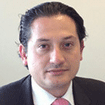M-Prize Winner
This hack is one of ten winning entries in the Long-Term Capitalism Challenge, the third and final leg of the Harvard Business Review / McKinsey M Prize for Management Innovation.
Hack:
Quantifying well-being and impact can drive investors to build a better world
When companies create quantifiable value for society as well as shareholders, those firms can be more profitable and become the foundation of a stronger portfolio. Across all investment types (cash, fixed income, equities, venture, real estate) human, social, and environmental impact can be quantified, scored and valued – and linked to profit and shareholder value. Yet, investors, advisers and brokers are ignoring this potential today. 21st century investors and their fiduciaries will capture this potential upside of a better world and strong portfolios.
Capitalism used to be easy. Discover, acquire, and defend a unique resource. Pay people the least you can get away with. Off-load as many liabilities and risks to government as possible. And, of course, collect the profits in as short a time as possible. These captains of industry used to be called “robber barons”; today they are simply called “capitalists.”
The super-majority, about 7 in 8 dollars, of assets managed focus on a purely traditional capitalist approach, which typically prioritizes short-term financial gain. However, this traditional approach has accelerated the number and intensity of societal problems. By supporting this traditional approach, investors fail to take into account leading indicators for long term profit and perpetuate a system of short term waves with devastating troughs. Most recently, these crashes have scared capital out of the market and stinted economic growth.
To counter this purely financial approach, investors have allocated about 1 in 8 dollars managed to “socially responsible” investing -- typically excluding “bad” companies from their portfolios. This has relieved some consciences, but in many cases the majority of these funds have failed to beat the typical benchmark. (Most mutual funds of the capitalist approach don’t beat their benchmark either) and increased risk through reduced diversification. However, this approach focuses on morality, and not financial performance, and with poor performance, it’s been slow to gain traction and unable to attract institutional investors that can have a larger impact on the marketplace.
In this time of transition, we need to create a system where a company’s impact and value to society is quantified alongside financials, because it will be these factors that can create their long term competitive advantage in a marketplace that has already priced in projected revenue and long –term debt. Factors like reduced emissions, employee satisfaction, diversity, and energy usage intuitive create brand value, encourage efficiency, incubate productivity, and reduce risk, and yet they are not used to predict long term fundamental financial value. By rewarding this social and environmental performance, we will perpetuate a system that invests in long term capital and value creation, and not short term, unsustainable profits.
Building a better world through investing that quantifies and values well-being and impact is required. Today, 80% of the market value of a typical S&P500 company is “intangible.” That is, the asset value is NOT on the balance sheet or book value. Yet companies think they can “manage” their market value, when there is a dearth of metrics for these intangible assets – starting with their people and associated intellectual property.
In the 21st century, investors can seek to generate human impact and profit simultaneously. This “HIP” approach embraces a comprehensive view of society and makes investing choices based on a full picture of all risks and opportunities, in the short- and long-term. We encourage for-profit companies to solve human problems, generating new customers, fulfilling employees, and serving society. By aiming to combine the pursuits of “doing good” and “making money” -- drawing from the best of both worlds, a more impact-oriented investor seeks the goal of bigger profits for your portfolio while building a better world.
A core impact-focused, or HIP, portfolio seeks to increase measurable human, social and environmental impacts. When companies are rated on “how HIP” they are, those leaders strive to “race to the top” and laggards seek to “avoid the bottom.” Competitive human nature kicks in and the total impact starts to rise. Furthermore, this competitive rating approach creates a drive by innovative companies to provide solutions that deliver even higher environmental, social and human impacts.
What gets measured gets managed, but currently many corporate metrics tend to be narrow, short-term and exclusively financial. This creates added risk by not properly accounting for true leading indicators of performance. A company’s fiduciary responsibility is to drive profit, but profit is only evident after the fact. To predict the winners, an investor or executive needs to focus on the long-term indicators that are not yet fully embraced in the financial statements. More profit is possible when investors and leading companies look comprehensively at the business, to build both more profit and a better world.
Five types of metrics inspired by Maslow’s Hierarchy of Needs – Health, Wealth, Earth, Equality, and Trust – are frequently ignored in financial reports and by traditional stock analysts. These metrics are seen as “soft” when they actually relate to “hard” value. Leading companies appropriately measure their impact on overall society, including the environment, and how it relates to the bottom line.
Here is an example of one metric from each category:
1. Health: Protecting the Core Asset
There are five groups of quantifiable metrics a HIP (“human impact plus profit”) investor can use to evaluate companies in Health:
1-a. Customer satisfaction
Customers who are happy – and thus mentally satisfied – return to buy more, and tell others about their positive experience. They could be satisfied by the innovative applications that run on the Apple iPhone (Nasdaq: AAPL), the accommodating customer service at Nordstrom’s (NYSE: JWN), or the breakthrough eco-efficiency of the Toyota Prius (NYSE: TM).
Consulting firm Bain has measured that the most profitable customers of a firm are its repeat customers. Once a customer finds a product that solves a problem, they tend to buy again, as long as the company keeps them happy. When customers become net promoters (i.e., willing to recommend a company to others), the firms experiences the highest revenue growth. Where can you find data on customer satisfaction? Try www.TheACSI.com, which covers many companies in the US, UK, Sweden, Singapore and Mexico.
In its book "Satisfaction", the consultancy JD Power showed that increasing and high customer satisfaction typically drives higher levels of top-line revenue, bottom-line profit and thus, shareholder value.
1-b. Employee satisfaction and retention
Employee satisfaction is linked with good customer relations and with overall increased productivity. To head off employee turnover and to promote high staff engagement and retention, financial software company Intuit (Nasdaq: INTU) proactively addresses employee engagement and managerial competence. Intuit comprehensively surveys its 8,000-plus staff annually in November about overall satisfaction with the work environment and managers. Intuit typically gathers a phenomenal 92 percent response rate with its online survey. The results scores are then used by managers to start a dialogue with employees about ways to improve the workplace. Sometimes this leads to clearer manager communication or improved focus to address important issues. For the manager’s senior leaders, the scores can also indicate opportunities for leadership development, coaching, or a role change. Intuit’s investment in high retention has kept turnover—and the associated costs—lower than competitors.
1-c. Wellness programs for staff
Employee health and well-being has a direct effect on company well-being and profitability. HIP investors should look for companies that provide health insurance coverage for the majority of its employees. Higher HIP scores flow from companies that go further and invest in wellness programs that promote healthy lifestyles.
Safeway’s (NYSE: SWY) innovative health-insurance pricing schedule has saved it money and improved the health of their employees. Since its inception in 2005 until 2009, overall wellness initiatives at Safeway have kept health care costs for the company flat on a per capita basis, while most American companies’ costs have increased 38 percent over the same four years, according to its CEO Steve Burd. By encouraging healthy action by reduced premium payments, Safeway employees have reduced their obesity and smoking rates to roughly 70 percent of the national average. This, coupled with a 78 percent employee satisfaction with healthcare rating, makes a HIP, happy, healthy – and potentially more profitable – workforce.
1-d. Employee safety
Like employee health and wellness, a safe work environment has many financial benefits to companies—more consistent productivity, high staff morale, lower medical expenses or insurance premiums—and it produces a positive return on investment for a group of the company’s most valuable assets: its employees.
Alcoa (NYSE: AA), shares real-time accident ratios. (http://bit.ly/bYRbdT) In January 2011, 91.7 percent of Alcoa’s 212 locations globally had zero recordable injuries, and 99.5 percent of those sites had zero lost workdays.
In the 1980s, CEO Paul O’Neill made job safety the core metric on which senior executives were measured. For shareholders, his focus on human impact and profit multiplied Alcoa’s shareholder value by 10 times from $2.9 billion in 1987 when he started, to $29.9 billion when he retired in 2000.
John Deere (NYSE: DE) is a leader in workplace safety and health. In 2008, its business units received 43 safety awards from the U.S. National Safety Council. An example: in 2010 the company's Cylinder Division in Moline, Illinois, had operated for more than 15 years without a lost-time injury. Although these training programs require investments of money and time, in the long term they increase productivity and reduce risks to legal and medical expenses. From a long term perspective, this metric can drive increased profit.
1-e. Stakeholder and community health
Corporations can both benefit their bottom line and reduce their overall operating risk by engaging the communities in which they operate. Many non-U.S. markets (think India, China and Brazil) provide high-growth opportunities for creative corporate approaches.
For example, in Rio de Janeiro, the health care firm Johnson and Johnson (NYSE: JNJ) has partnered with Mobile Metrix, a nonprofit, to investigate the needs of the low income, base-of-the-pyramid communities. The nonprofit pays locals to collect the information with handheld digital devices, which create jobs as well. “We can help increase access to health care, boost income for those collecting the data, and create a new market for corporations,” says Melanie Edwards, founder of Mobile Metrix. J&J can then target the right products to the right customers—something not possible without this census-type data. It also can generate new revenues and profits while the community’s health profile increases with access to affordable health care products, the wealth from income-paying jobs goes up, and more Equality is realized.
2. Wealth: Building Employee Worth
Wealth Matching – HIP companies seek to align financial goals with employee compensation through wealth-matching programs. These programs include pensions, 401(k) matching, and discounts to purchases of company stock. For example, financial software company Intuit (Nasdaq: INTU) promises to grant stock options to all employees – it also earns very high employee engagement scores, a likely driver of satisfied and returning customers, which should boost top line revenue and can contribute to growing bottom line profit.
There are three groups of quantifiable metrics a HIP investor can use to evaluate companies on Wealth:
a. How a firm provides for employees’ savings and retirement
b. The level of employee pay relative to industry peers
c. The CEO’s compensation relative to average staff pay
2-a. Wealth Building and Matching for All Staff
For customers to be truly satisfied, employees need to consistently perform well; and to achieve that, employees must be satisfied with their employers. HIP companies seek to align their goals with employee goals through wealth-matching programs. These programs can vary from pensions, to 401(k) matching, to access to company stock, and options to buy that stock. Offering ownership in the company is an effective tool for aligning employee and employer interests.
It is not easy to compare wealth-matching programs across companies. They vary not only by investment type (pension, 401(k), stock grant) but also by the rate of matching employee contributions. The best plans typically match 6 percent of employee contributions, whose simplest form can be a dollar-for-dollar approach.
At Whole Foods (Nasdaq: WFMI), more than 13,000 staff received stock options from the company. “Leadership grants” of these options recognize team member performance, and “service hour grants” recognize employee actions in the community (these totaled nearly half of WFMI’s stock grants in 2007). In addition, more than 2,000 staff typically choose to buy Whole Foods stock quarterly at a 5 percent discount, collected through payroll deductions.
Companies applying an inclusive approach, like Whole Foods Markets, cultivate strong staff loyalty and lower turnover, leading to higher customer satisfaction. Whole Foods shareholder value consistently grew in the early 2000s until its erosion in 2006 to 2008 from competitive pressures. Whole Foods commitment to employees’ compensation and benefits may have helped contribute to its 2009 out-performance against the S&P 500.
2-b. Employee Pay Relative to Industry Peers
If people flock to the highest pay, then why doesn’t everyone work in financial services, health care, or technology sectors that exhibit the highest pay rates? And why would anyone work in retail or food service sectors characterized by the lowest pay rates? In fact, absolute pay levels do not alone provide the necessary information. Indeed, leaders in each sector may not necessarily pay the highest. For example, Disney (NYSE: DIS) historically pays under the average compensation for the opportunity to work with the “Magic Kingdom.” Top-paying firms, especially in investment banking, typically want staff to put in extraordinarily long hours. But the level of relative pay within an industry or sector does tend to be a contributing factor for a HIP portfolio.
HIP investors don’t have an easy job figuring out pay levels. Despite the detailed financial statements issued by companies, it is rare to find in the financial statements a total compensation number to divide by the total number of staff to calculate an average pay per employee.
However, employees can self-report pay at Web sites like PayScale, SimplyHired and JobNob. Yet these are not very reliable—the number of respondents is a small fraction of the entire company, and the pay rates reported tend to be those of higher paid managers, scientists, and executives. Some of the websites have features to adjust for geography, years of experience, and role, which can help yield a more reliable estimate.
For a HIP portfolio, proceed with caution. Check to make sure there are enough respondents to make the information comparable. Be careful in calculating averages, as the number of employees who reply varies by years of experience, job type, and geography. A HIP investor can calculate a weighted average adjusting for those factors to make the numbers more comparable. This research can help set the stage for identifying companies with pay policies consistent with balanced wealth creation for employees, not just executives.
2-c. CEO Compensation Relative to Average Staff Pay
You would expect higher levels of CEO compensation to correlate to increased shareholder value. But does the ratio of CEO-to-worker pay correlate with higher financial performance? For an overall portfolio, HIP has calculated that a lower ratio of CEO pay to average staff pay correlates to higher levels of financial performance. However, results for individual companies may vary widely. HIP investors realize that CEOs can be paid relative to increases in long-term shareholder value, but that overall lower CEO-to-worker pay ratios connote more employees sharing in the wealth, which fosters higher employee dedication and productivity resulting in financial success—for the CEO, the workers, and you as an investor.
According to The Corporate Library, the average compensation for an S&P 500 CEO was $10.4 million in 2008. The average worker’s compensation is just over $40,000, according to the Bureau of Labor Statistics, based on a 40-hour work week and median employee wages of $20.62 per hour in 2008. Therefore, the average CEO makes more than 300 times the average worker’s pay.
3. Earth: Reducing Emissions and Natural Resource Intensity
A HIP investor can use four quantifiable metrics to evaluate companies on their usage of nature’s resources:
a. Waste Re-usage
b. Water Efficiency
c. Energy Efficiency
d. Greenhouse Gas Emissions
3-a. Waste Re-usage, Re-cycle, and Re-sale; Resource Efficiency
Limiting waste is an obvious benefit: It reduces costs and lessens the amount of resources used. So, how are we doing? About 6 percent of all the material inputs going into a manufacturing process come out the other end as a finished product while 94 percent are un-used or wasted, according to INSEAD professor Robert Underwood Ayres.
Eliminating waste can even boost top line revenue through what can be called “trash to cash.” Waste Management Inc. (NYSE: WM), a traditional garbage removal company, now considers itself a materials manager: It seeks out innovative ways to generate revenue from collecting and moving garbage. Today, it operates almost 300 landfills with associated collections and transfer points across North America, serving 20 million customers. Those landfills gestate gases like methane that can be recaptured and turned into energy. Since methane is equivalent to 21 units of carbon emissions, capturing it can power new energy-generation while reducing emissions. Furthermore, Waste Management’s recycling revenues account for nearly 10 percent of its total revenue. Cost centers, like trash, are becoming revenue centers for cash.
3-b. Water Efficiency, Re-capture and Re-use
Water is a precious resource that is increasingly strained. The planet is 70 percent water, but most of it is salt water. Fresh water is increasingly at risk and becoming scarce, as evidenced in the Southeast United States in 2008.
Both Ball Corp. (NYSE:BLL) (46 percent water recycling) and Devon Energy (NYSE:DVN) (80 percent water recycling) avoid taking new water from river systems and instead re-use existing water for manufacturing and production. The ecological and financial benefits are pretty straightforward; by reusing such a scarce resource, these companies leave more water for the planet to flourish, and by reducing inputs they reduce cost and increase bottom line profit.
3-c. Energy Efficiency and Renewable Power
Energy efficiency clearly contributes to lower costs and lower environmental impact. A HIP investor will recognize that the power of eco-efficient initiatives amplifies when a company designs for more than one goal. For example, cosmetics maker Estee Lauder converted 54 percent of its disposable waste to energy in 2007, saving costs in hauling waste and purchasing new energy. Estee Lauder (NYSE: EL) has also become a renewable energy leader by partnering with DomeTech to install 3,200 solar panels at a fragrance factory, which supplies half of the plant’s daytime energy needs—at a projected savings of 10,000 tons of carbon emissions over the life of the system. This installation is one of the largest solar energy systems in the United States outside a utility.
A HIP investor can estimate energy intensity and compare among industry peers. Some companies report energy usage (in gigajoules); others report kilowatt-hours of electric purchases—dividing either measure (usage or purchases) by revenue, you can compare energy intensity. You can then use that measure to compare across companies within a sector or to look at trends over time. Remember renewable energy eliminates the need for fossil fuels, the attendant pollution, and the risks associated with volatile price swings — an eco-efficient triple play. We look for this metric not only to reduce risk, but to increase top line sales (as consumers incorporate efficiency into their shopping habits), as well as bottom line revenue where reduced costs equal higher profits.
3-d. Greenhouse Gas Emissions, Intensity, and Reductions
Tracking carbon is an emerging discipline. It has sprouted into a new field of managerial accounting. Companies that track their overall carbon emissions, from GE (NYSE: GE) to Dow (NYSE: DOW) to Walmart (NYSE: WMT) understand their carbon “footprint” and consequently know how to manage it. Reducing carbon leads to reductions of energy, cost and pollution.
The Carbon Disclosure Project (CDP), a nonprofit based in London, is a clearinghouse of information on these greenhouse gas (GHG) emissions. The CDP involves 475 institutional investors representing $55 trillion of assets.
A HIP investor will want to know if a company is tracking its emissions and reporting that data. As of year-end 2008, two in three companies of the largest 500 in the United States have neither declared carbon reduction goals, nor time frames for potential reductions. HIP investors value the companies that disclose their emissions, set specific time tables for reductions, and benefit from the lower costs and risks associated with this path. HIP’s analysis indicates that a portfolio that highly weights the leaders in emissions reduction can generate both a positive Earth impact and increased opportunities for higher profit.
A HIP investor recognizes that companies lowering its carbon intensity can outperform financially due to lower energy usage – and decrease its potential liabilities from not polluting. Carbon-efficiency products can generate top-line revenue too; in 2007, DuPont earned $65 million revenue from products that reduce GHG emissions, accounting for 55,000 metric tons of GHG emission reductions. In the future, it is targeting $8 billion in revenue from eco-efficient products. Operationally, DuPont (NYSE: DD) seeks 100 percent of its company fleet of vehicles to be fuel-efficient; in 2008, 22 percent of its U.S. vehicles were hybrid, flex fuel, clean diesel, or E85 octane powered. Leaders like DuPont can realize lower costs, better manage risks, position for fewer liabilities, and generate revenue from customers seeking products with zero- or low-emissions products.
4. Equality: Increasing Diversity
The HIP metrics in Equality look across the spectrum of customers, employees, and suppliers. So, let’s examine how to count quantifiable metrics in equality that can create competitive advantage and drive business performance:
a. Customer diversity
b. Board diversity
c. Employee diversity
d. Supplier diversity
4-a. Customer Diversity
A core HIP metric that every company can count is revenue by geography. It’s easy enough to imagine the diversity of the world and how we are different. Successful companies discover what makes its products unique to customers, and then build on that to grow revenue and income in new markets.
International revenue helps to diversify financial performance across countries with varying growth rates, currency values, and business cycles. International diversification stabilizes revenue variations. An added value of selling in another country is that it typically provides new jobs there—in sales, service, and accounting. These jobs create local wealth and begin a path toward including the locals. That’s why Bespoke Group tracks this metric methodically.
In fact, the 500 largest companies based in the United States do this very well. Approximately half of the total revenue generated by S&P 100 firms, and one-third of revenue from S&P 500 firms, is outside the U.S. In addition, some U.S.-based firms generate more than 80 percent of their revenue internationally. Qualcomm (NASDAQ: QCOM) generally gets about 87 percent of its revenue internationally, and has enjoyed average revenue growth of over 25 percent for the past 10 years.
Firms with strong international revenue typically understand more about diversity than ones that are just serving local markets. With a world that will soon total 7 billion people, there is tremendous opportunity for growth, if you understand what human problems you can solve.
4-b. Board Diversity
Most consumer-focused companies serve a wide variety of customers across gender and ethnicity. However, the management of those companies is not always representative of the customer base that it serves, nor the workforce it represents. Individual investors holding stocks directly tend to be less diverse than the overall population and workforce; this ratio may shift if pension funds are taken into account.
A HIP tenet is that the leadership, and especially the fiduciaries, of an organization should be representative of those it serves and is accountable to. From its high perch, the Board of a company seeks to understand its customers and where future growth will come from, connect with employees as to how the company operates, and obtain multiple stakeholders’ perspectives that highlight new opportunities or challenges for the enterprise. One company with surprisingly high diversity on its board is Eastman Kodak (NYSE: EK), with 2 women and 5 ethnic board members out of 10 (1 member is both female and ethnic), and not coincidentally, its international revenue has been steadily growing.
The HIP measure of Board Diversity is a first step in balancing the multicultural nature of society. Leaders with high Board diversity tend to be well managed, open to new innovations, and producers of increased shareholder value beyond those that lag in this metric.
4-c. Employee Diversity
HIP investors know that diversity in the workforce adds great value. A HIP portfolio will give weight to those companies that intentionally build a workforce that reflects its customer base (both actual and potential). Several areas of diversity within the workforce deserve special attention: women, ethnic minorities, and gays and lesbians.
“We are not the old-fashioned manufacturing company my friend works for,” says Ann H.S. Nicholson, the director of investor relations for Corning (NYSE: GLW), a materials company that has pioneered innovations like heat shields for spaceflight, optical wires that run under the ocean to carry Internet traffic, and ceramic bakeware for your oven.
Nicholson is referring to two elements of its equality results. First, Corning’s overall diversity in terms of gender and ethnicity is highly global, covering over 27,000 staff across 70 locations worldwide. Second, Corning takes a systematic approach to ensure its diversity is reflective of both the societies it operates in and the customers it serves. Both reflect the HIP approach, because asCatalyst Inc. analysis shows, the more women sit on a company’s Board and executive team, the higher profit, return on capital and return on equity the company delivers.
4-d. Supplier Diversity
Supplier diversity can be a source of innovation for large corporations. A HIP investor will look for companies that foster and encourage supplier diversity. This is good business that spreads jobs and wealth among many communities.
When growing up in the Southern U.S., a certain young African-American woman sold ear piercings to her friends for $2 per person, which included three follow-up visits. Her passion for people led to tremendous business success. Today, she employs thousands of people.
You are likely thinking it’s Oprah Winfrey, right? No, it’s Janice Bryant Howroyd. Her company, ACT-1, has revenues of $750 million, according to Black Enterprise magazine, twice as much as Oprah’s Harpo Inc. Though you may not have heard of her, many Fortune 1000 corporations have. ACT-1 provides corporate services from staffing to background checks on job candidates to accredited distance learning and electronic document management, as well as a travel agency.
IBM’s former CEO Sam Palmisano views the advantages as a compelling business case. He recognized ethnically-owned business as the “mainstream of the global economy . . . driving global growth.” He went further to acknowledge that IBM’s (NYSE: IBM) decision to work with those suppliers comes from the opinion that “Such companies bring a new dynamism and spirit, and offer new ideas and points of view—providing innovative alternatives and aggressively filling niches being abandoned by larger suppliers.”
5. Trust: Being Transparent and Honest
There are four groups of quantifiable metrics a HIP investor can use to evaluate companies on Wealth:
a. Agreeing to be interviewed
b. Third Party Certificates
c. Legal Actions
d. Lobbying
5-a. Agreeing to Be Interviewed
It goes without saying how transparency and openness to investors can reduce the risk of an equity investment. By showing that they truly have nothing to hide, a company can show investors that they can feel more comfortable in investing in a less risky company. This also transfers to socially conscious consumers who will feel more comfortable supporting companies and products and thus, drive top line revenue, and bottom line profit.
Exercise your right to speak up at annual shareholder meetings. Be in contact with companies as you discover facts that are not transparent. Participate in social networks such as JustMeans.com to make your voice heard. If you are a shareholder in a public company, you own a real share in that firm. Let the company know what you think, how you feel, and what solutions they should consider to build a more HIP future.
5-b. Third Party Certifications
Third party certifications can help build trust and signal an independent third-party judgment that tends to be fair and impartial. But HIP investors also check the source and the methodology. Positive certifications reduce the likelihood of subpar returns, either because of the product’s higher quality or its increased telegraphing of expectations to the customer. Both increase business value.
A HIP investor selects the certifications that encourage top-line revenue without risking the brand reputation or legal actions. The Malcolm Baldridge Quality Award is presented annually to those companies with top process excellence. The ISO 9001 standard for managing quality added a designation for environmental and energy management systems in 1996 called ISO 14001 (eco). Ford Motor Company (NYSE: F) was an early adopter for itself, saving 1 million gallons per day of water at one of its truck factories. Subsequently, it mandated all suppliers to be certified as ISO 14001 as well. This commitment was another contributing factor in avoiding bankruptcy, unlike GM, which took several years to follow Ford’s lead.
Now there are over 14,000 companies with over 126,000 ISO 14001 certifications, and recently, more certification programs have arisen to help evaluate environmental claims like “natural” or “biodegradable” for products. Currently there are more than 278 certification programs active worldwide, according to EcoLabelling.org. By researching the certifications held by a potential investment, a HIP investor can anticipate the stamina of a company’s market presence.
5-c. Legal Actions
After years of legal battles, Ecuadorian residents won $9.5 billion for humanitarian and environmental remediation and damages allegedly caused by Texaco, before its acquisition by Chevron (NYSE: CVX). And although mentioned in Chevron’s annual report, it “(did) not believe the report has any utility in calculating a reasonable possible loss.” This liability had neither been accounted nor reserved for in Chevron’s budget.
So by studying the ongoing legal actions, a HIP investor can select for companies that are not at trial for potentially bringing about social or environmental harm, as well as those with low risk for legal financial liabilities. Lower negative human impact seeks higher profit!
5-d. Lobbying
HIP investors should examine lobbying, as it may reveal a company’s strategy regarding a fair playing field. Two aspects of this metric are important. First, the lobbying amounts overall tend to advocate for narrow corporate interests rather than a balance with society as a whole. Second, calculating the amount spent relative to revenue, and comparing to industry competitors, may be indicative of a firm that is seeking special conditions, which could create unfair advantages relative to competition. UseOpenSecrets.org
Goldman Sachs (NYSE:GS) has been one of the top five political donors since over the past 20 years with an average of $1.5 million spent annually. Now with trials and discussions underway regarding their conflicts of interest within their proprietary model, it would be reasonable to assume that anticipated financial reform could interrupt their business model and reduce revenue streams. This is a risk that should be priced into the value of a company, and can be directly represented, and compared to industry peers, though lobbying amounts.
Why is it an important metric? First, the lobbying amounts overall tend to advocate for narrow corporate interests rather than a balance with society as a whole, creating risk of a backlash. Second, calculating the amount spent relative to revenue – and compared to industry competitors – may be indicative of a firm overspending on “protecting” old ways while potentially under-spending on innovating new products and services. For example, AT&T (NYSE: T) spends record amounts of money on lobbying and political donations. According to OpenSecrets.org, AT&T has spent more than $43 million on lobbying since 1989, funds that could go to R&D, such as creating the next iPhone network.
Across five elements of HIP – Health, Wealth, Earth, Equality, and Trust – these data-driven metrics can be used by investors. Each metric relates to quantifiable business value – from higher revenues to lower costs, from optimal taxes to premium stock values. The resulting financial performance can lead to a portfolio that realizes higher human impact and profit.
The pinnacle of a better world is that all its resources—human, ecological, and financial—are put to productive and beneficial use.
Life expectancies worldwide continue to climb, in general, through better health and wellness. Access to capital is expanding through micro-loans and entrepreneurship. Renewable energy and clean water technologies will help release the strain on our natural world. HIP companies and investors can reap bigger profits by building a better world—and this can actually be realized over the next five to ten years.
As we move closer to a sustainable world, HIP consumer, employee, and citizen will make a difference to the world of business, investing, and society.
The best-managed corporations will bring new products and solutions to market to solve a variety of human needs—in Health, Wealth, Earth, Equality, and Trust. These products are serving multibillion- dollar markets, with the leaders capturing new revenues, higher shareholder value, and competitive advantage. The ability to quantify human, social, and environmental impacts across the entire enterprise, from customer to employee to supplier, is a critical skill.
When business understands the value of these leading indicators, it can boost overall profit while simultaneously creating more good. And when investors value this in business, it will encourage competition for long term capital investments.
Leading companies embed this approach in all that they do. Investors who recognize these winning practices, and identify and rank companies according to this new framework, position themselves for greater good and gain. Every investment has the potential for human impact. Importantly, this can all be achieved with a compelling purpose: an improved society for everyone, globally.
How do leading, well-managed companies consistently deliver top performance and seek ever higher human impact and profit? Five elements of their management systems provide a solid foundation of how a very HIP organization operates:
I. Paints a compelling business Vision that integrates sustainability, complete with deadlines and quantifiable success.
II. Manages performance with a balanced scorecard of five to 10 Measures, including human impact.
III. Aligns all impact measures to the Financial implications and reporting.
IV. Establishes Accountability and rewards with successes for sustainable, profitable growth.
V. Embeds HIP criteria into corporate Decision-Making systems.
The HIP Quiz, at the www.HIPinvestor.com website, provides multiple choice answers to these five questions, rated on a five-point scale. The most HIP practices total a top score of 25; the least HIP, a mere 5 (of 25 maximum points). Let’s examine how leading companies implement these management practices.
I. Vision
It takes vision to see the future, and it was Interface’s previously mentioned sustainable foresight that has driven its survival and progress. One example of how Interface Inc.’s vision to be “100 percent environmentally sustainable by 2020” and “environmentally restorative” starting in 2021 channelled action came when one of the engineers at Interface’s LaGrange, Georgia facility designed a system for recapturing methane emissions (which are 21 times more destructive to the environment than carbon) and using them as an energy source, thereby lowering both pollution and energy cost. See LaGrange’s latest accomplishments here(http://bit.ly/ibTEMV). In addition, this methane-capture energy reuse facility is a public-private partnership with the local municipality, which has a positive financial return both for Interface and the city.
Once you understand how HIP a company’s vision blends both business and sustainability, then you can evaluate how a corporation applies a “balanced scorecard” of metrics that incorporate both Human Impact and Profit.
II. Metrics
Every business measures profits, but that is a lagging indicator. To be predictive, you need to look at leading indicators. What measures might be predictive of financial success?
Bonnie Nixon, the former Director of Environmental Sustainability, told me everyone at Hewlett Packard (NYSE: HPQ) says: “If you want to change something here at HP, get a scorecard.” Engineers love to quantify changes in their world, and a consistent way to track that is through numerical counts of impacts and profit.
Scorecards show how H-P is consolidating 85 data centers to six, and going from 6000 technology application systems to 1500. HP also indicated that 80 percent of all enterprise customer Requests For Proposal (RFPs) now have eco-factors in them, and that 79 percent of consumers would choose more eco-efficient products if all other aspects are the same.
A HIP company seeks to implement a manageable set of performance measures that are quantitative leading indicators, covering both Human Impact and Profit, which can be rolled out from the front-line to the Board of Directors. While the HIP Scorecard for investors can track 20 or more metrics, leading companies select the most meaningful measures to track, typically a handful of five. With accountability, this small handful can drive increasing business value based on positive impact.
III. Financial Alignment
Businesses that reframe their market share, customer segmentation and managerial accounting systems in terms that go beyond mere financials can better understand how drivers of human impact link to financial value. In PepsiCo’s case, products are classified as “good for you,” “better for you,” and “fun for you” (Morris 2008). While 70 percent of products today are fun like Doritos, the good and better categories were estimated in 2009 to have risen to 30 percent of revenue, and and the company plans to move that figure to 50 percent.
Companies focusing on aligning their financials with human impact metrics (in this case, health) have seen global trends boost sales. This connection between human impact and profit makes it easy to see how HIP creates shareholder value.
IV. Accountability
Ensuring that accountability takes place across the entire enterprise requires multiple teams, sponsors, and networks. At Walmart (NYSE: WMT ), teams working on topics like reducing packaging are composed of representatives from inside staff, linkages to suppliers, and external experts, like academics and environmental nonprofits. These “sustainable value networks”(http://bit.ly/HRobx) are lead by “network captains,” who are directors or VPs who help break down barriers to success. A higher level “executive network sponsor” and an enterprise-wide “sustainability team” oversee multiple teams and help provide alignment among multiple goals. On a quarterly basis, the entire company’s staff is connected through a videoconference update to review progress toward goals, and celebrate the success of the past three months.
Firms seeking to drive profit with this HIP approach set up the corporate infrastructure that provides checks and balances for their Vision. By demanding responsibility, these companies become reach their goals as leaders socially and financially.
V. Decision-Making
This systematic approach of reviewing criteria beyond pure financials is also used by Kraft Foods (NYSE: KFT ) for its product designs and capital spending reviews. At Kraft, the package developers must evaluate every new design according to an eco-calculator, says Steve Yucknut, the VP of Sustainability. Numeric values assess the product-to-package ratio, the number of layers of packaging, and the impact on landfills. For larger projects, energy costs are tested for a range of scenarios. While low-energy inflation makes some sustainable projects less obvious compared to Kraft’s traditional 14 percent ROI hurdle rate, if energy prices jump as they did in 2008, return on investment can jump to more than 25 percent. Yucknut says, “We tend to be open-minded and generous if sustainability is included in the project.”
This decision-making can be seen as risk management, engaging future markets, or responsible business. Regardless of the title, integrating this type of analysis into daily business decisions aligns long term financial goals, with their aspirations for a better world.
Evaluating management practices shows how companies can ensure a more HIP approach over time, and embed a higher intention towards financial outperformance. As a HIP investor, you can evaluate companies by researching and interviewing them. Leading companies, like Interface and Walmart, are becoming more transparent about how they make decisions. Encourage other companies to follow their lead—because as you now know, it could also benefit their bottom line.
Valuing capital with these new fundamentals of investing requires finding measurable metrics that intuitively and mathematically (backtesting) create value in society and the performance of the company.
Once these metrics have been defined, they can be used to score and weight all asset classes in your portfolio.
Once an investor knows their current allocation for human impact, they can start to create a more impact-oriented portfolio by rating new investments to transition towards long term capital investing that mitigates lesser seen risks, has the potential to boost untapped returns, and build a better world.
In order to actualize your goal to create positive human impact and profit, an Impact Investor will need to take the following three steps:
Impact Investors should answer these questions by developing:
- Investment Policy Statement (sample): Add impact goals alongside risk, return, income & liquidity
- Impact Scoring: How sustainable is your corpus or endowment? How HIP Is it? Score every investment, every fund, every asset class and the portfolio as a whole.
- New Investment Evaluation: Integrate impact into your due diligence – and decision making - for both investing and divesting.
With Impact Scores (HIP Scores) and Impact Focused Portfolios (a more HIP Portfolio), investors can seek more Impact and Profit
And with this in-depth analysis, you can score each Asset Class by Human Impact and Profit
With this focus, an Impact Investor can use Sustainability and Impact as criteria across all asset classes in their portfolio (Note: these are sample choices, not recommendations).
Investors can consider signing The Investing Pledge to make a public commitment to invest a certain percentage of the for-profit portfolio for positive impact by a scheduled time frame (Example: 50% by 2015 and 100% by 2020). Your commitment could inspire others to do the same.
The Investing Pledge is a society-wide, cross-sector collaborative opportunity for impact investors across all geographies to come together to build a better world through all aspects of their portfolios. In addition, impact investors can share ideas, find commonalities and learn from each other’s approach.
By investing wealth sustainably, these commitments can encourage and reward positive and sustainable business practices – driving the new fundamentals of investing.
Co-authored with Gayle Keck, Jessica Skylar and Nicholas Gower
Co-created in portfolios with Patrick Gleeson of Meyer Family Enterprises
My mom for understanding people; my father for his compelling logic and analytical training
Nice to see you get the well-deserved recognition for your great work.
- Log in to post comments
Thank you for bringing well-being into the financial and value equation Paul! Additionally, the comprehensive connections that you outline challenges the organization to understand not only the business value but the missing business potential that could be achieved by this integrated human-centered approach. Great work - thank you!
- Log in to post comments
I must have missed this first time around. Always great challenges from Paul.
- Log in to post comments
This is great and much needed. As long as the measurements are based on short-term profit, that's what will be encouraged. Your hack suggests a way to provide more information for those of us who care about long- term sustainable profitability from companies who use and renew their resources wisely.
- Log in to post comments



















You need to register in order to submit a comment.